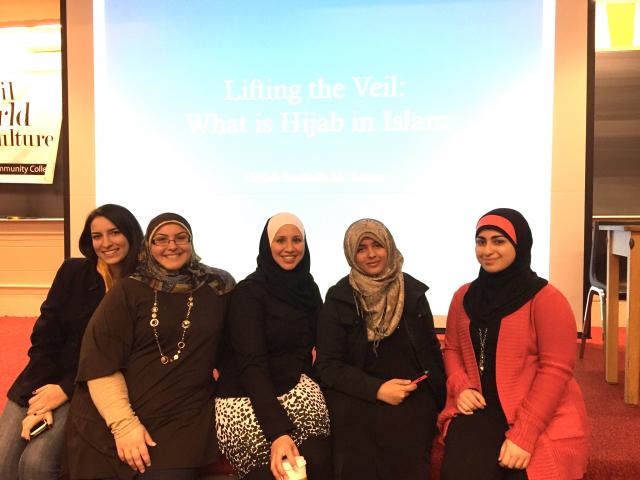Lifting the Veil: What is Hijab in Islam
Gallery

For those who are not aware, the word “Hijab” in Islam means more than just the scarf that women wear to cover their hair. Hajjah Suehaila M. Amen, the Requirements Event Coordinator for University of Michigan – Dearborn, came to Henry Ford College to “raise awareness” about the Hijab and what it means. Her presentation was appropriately titled, “Lifting the Veil” and it covered the common misconceptions Non-Muslims and Muslims alike have about the scarf and modesty in general. Her discussion aimed to lift the metaphorical “veil” and dispel any misconceived notions about the Islamic head covering.
Amen summarily defined the Hijab as modesty for men and women. Surprisingly for some, this includes averting one’s gaze when seeing a member of the opposite sex; and not purposely drawing attention to oneself in public. Clothing-wise, the proper Hijab for a man would be to cover from navel to knee when stepping out in public, and having shirt sleeves that go at least to the elbow. Amen spoke quite a bit about the proper clothing for men and women, however, she also stressed that hijab doesn’t just specify covering your body.
In Arabic, the word “hijab” literally means to cover, which is exactly what Muslims do, but in more than just the superficial sense of the word. Those who adhere to the ideal etiquette of the hijab “cover” their actions as well as their thoughts. Think of how you act when in the presence of an elder – from the way you dress, to the language of your body – you are aware of what you say and do. Hijab is meant to train the mind and improve the spiritual self, affording those who don it a sense of respect from their peers.
The presentation included a discussion panel comprised of four of HFC’s very own students. The four Muslim girls shared stories about why the hijab is or is not important to them. After the presentation was over, Amen took questions and answered them with personal examples and she was very interactive with the audience.
All in all, I feel like the presentation was great for raising awareness and informing the outside world of the forms of hijab; even those of us who were raised Muslim learned a thing or two. I personally thought that Amen did a great job presenting. She was very driven, and the passion that she showed was enough to motivate certain audience members to wear their head scarves too.
Photo By: Rana Makki (From Left to right: Talia Hamed, Nariman Sobh, Suehalia Amen, Mounira Almadrahi, and Layan AlKhalaf)
